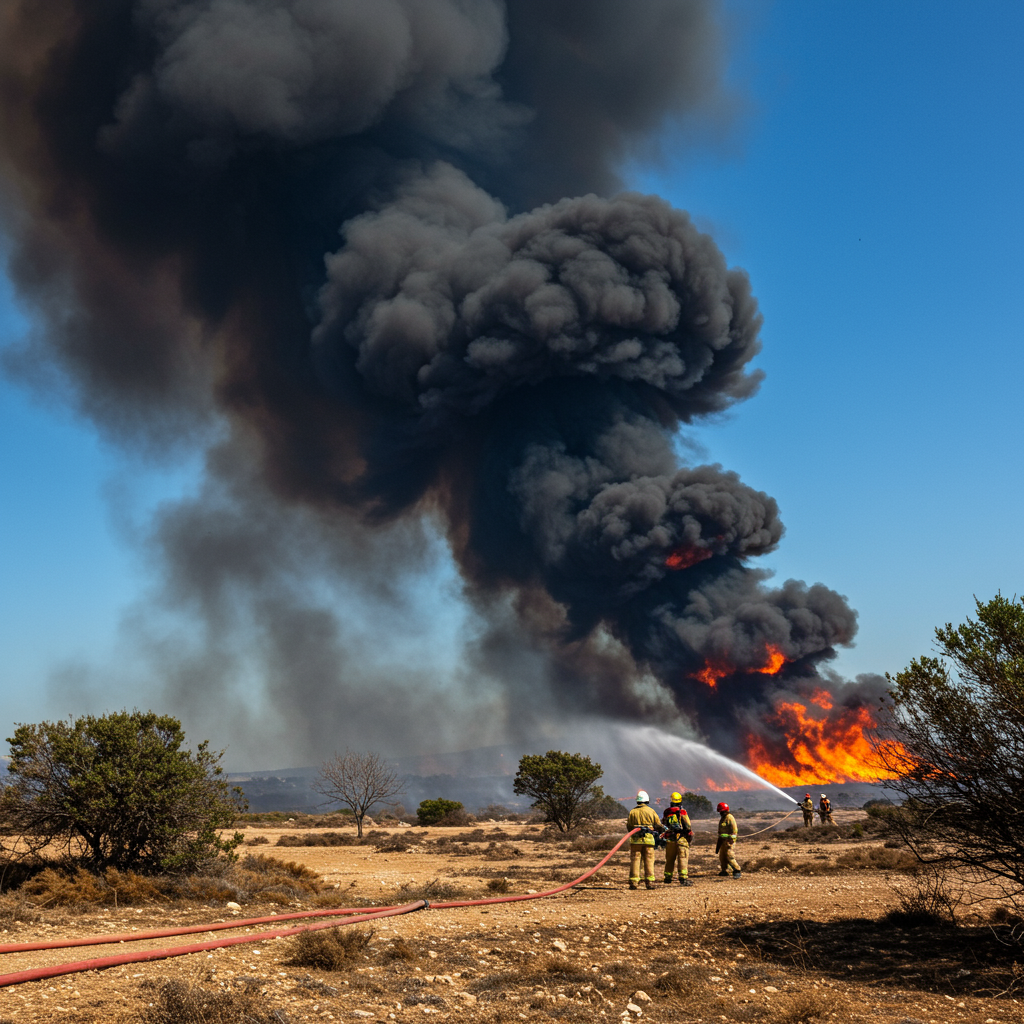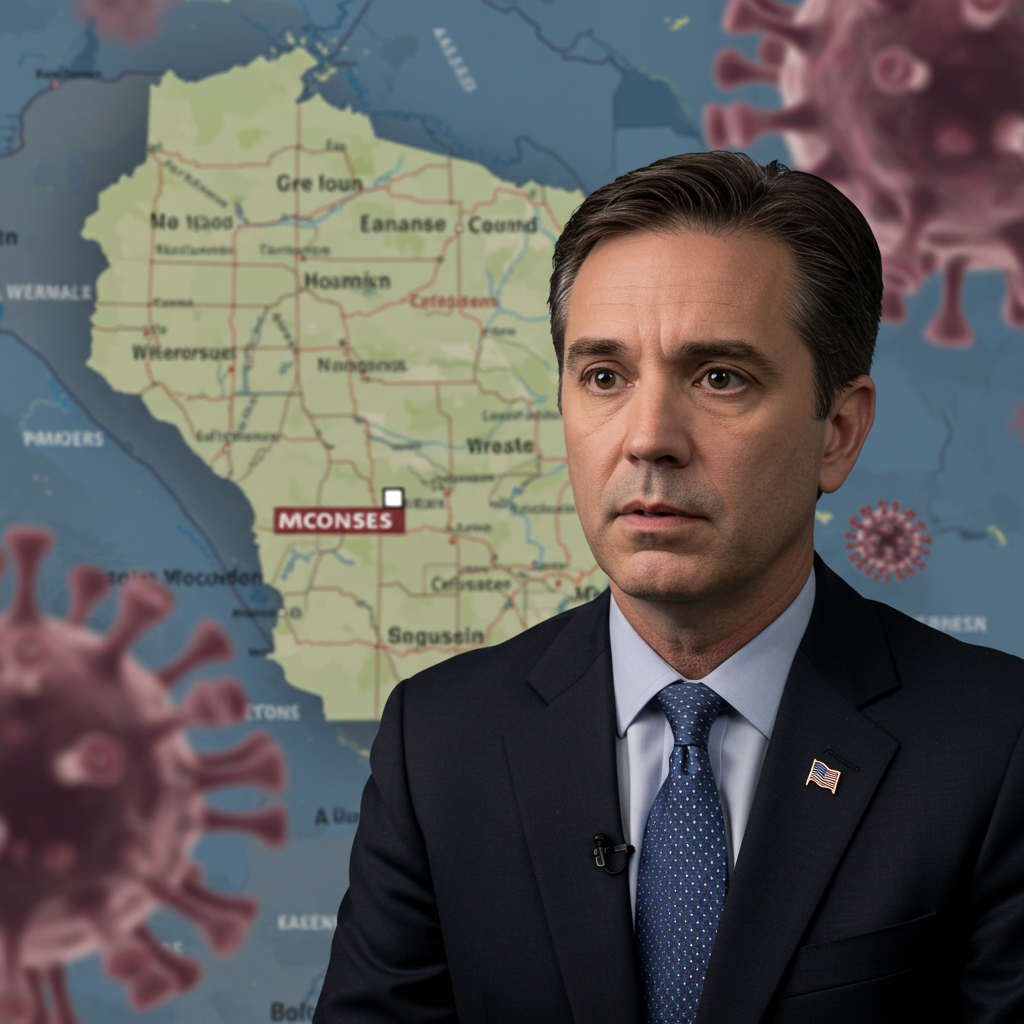A large and fast-moving wildfire ignited near marseille, France, earlier this week, causing significant disruption and impacting over a hundred people. The intense blaze, fanned by strong winds and exacerbated by severe drought conditions, forced hundreds from their homes and led to widespread closures of key infrastructure, including Marseille Provence Airport. Emergency services mounted a massive response to battle the inferno that quickly reached the outer edges of France’s second-largest city.
Rapid Spread and Extreme Conditions Fuel the Fire
The wildfire, which reportedly began near Pennes-Mirabeau north of Marseille, tore through approximately 700 hectares (about 7 square kilometers) of land. Fueled by powerful wind gusts and exceptionally dry vegetation – the region had seen no significant rain since May 19 – the fire spread at an alarming rate, reaching speeds of up to 1.2 kilometers (0.7 miles) per minute at its peak. Steep terrain and dense plant life in the area further complicated efforts to contain the flames. Authorities suspect the blaze was sparked by a car that caught fire on the nearby A552 motorway. These conditions underscore the heightened wildfire risk across southern France following weeks of heatwaves.
Human Toll and Extensive Evacuations
The fire resulted in injuries to around 110 people, though thankfully, no fatalities were reported by Tuesday evening. Among the injured were nine firefighters bravely battling the inferno and 22 police officers. Many others suffered from smoke inhalation. The escalating situation necessitated urgent evacuations, with French media reporting that at least 400 people were forced to leave their homes for safety. This included 71 residents from a nursing home in Pennes-Mirabeau. Residents in affected areas were issued strong warnings to remain indoors unless directed to evacuate, helping to keep roads clear for vital emergency vehicles. The scale of the fire’s impact on residents prompted one local, Monique Baillard, to describe the scene as “very striking – apocalyptic even.”
Massive Emergency Response Deployed
A substantial force of approximately 800 firefighters was rapidly deployed to the scene to tackle the challenging blaze. Supported by over 230 vehicles, five planes, and four helicopters, crews worked relentlessly, with plans to continue their efforts “all night” as the fire remained uncontained. French Interior Minister Bruno Retailleau traveled to Marseille to meet with local officials and assess the situation firsthand. Marseille’s Mayor, Benoît Payan, highlighted the intensity of the battle, describing the city’s marine firefighter battalion as “waging guerrilla warfare, hoses in hand” against the fierce flames. Authorities expressed hope that a forecast weakening of winds overnight might aid containment efforts.
Widespread Disruption to Infrastructure
The raging wildfire caused significant disruption across the Marseille area. Marseille Provence Airport, a major transport hub, was forced to suspend take-offs and landings for several hours on Tuesday, with the airport president describing the situation as “never experienced… of this magnitude.” The airport later partially reopened. Ground transport was also severely affected; sections of at least two major motorways, including the A552, were closed, train services between Marseille and Miramas were suspended, and numerous bus routes altered. As a precautionary measure, a major hospital in the northern part of the city switched to backup power generators due to localized power issues caused by the fire. Official warnings urged residents to avoid unnecessary travel to keep roads clear for emergency access.
Wildfires Across a Heat-Stricken Europe
The wildfire near Marseille is not an isolated incident but part of a broader pattern of intense blazes gripping southern Europe. A scorching early summer heatwave across the Mediterranean region has created tinderbox conditions, leading to multiple large-scale fires. Elsewhere in France, another wildfire near Narbonne burned through some 2,000 hectares. Spain, which recorded its hottest June on record, saw a significant fire in Catalonia near Tarragona, requiring 18,000 people to stay indoors and burning nearly 3,000 hectares. Greece also faced numerous fires, with 41 breaking out on a single day. This widespread crisis highlights the increasing challenges posed by extreme weather conditions and their link to climate change, making wildfires more frequent and destructive. French President Emmanuel Macron, while on a state visit abroad, offered support to the emergency teams and urged residents to follow safety instructions, extending thoughts to the injured and affected communities.
Frequently Asked Questions
How many people were injured and evacuated in the Marseille wildfire this week?
The fast-moving wildfire near Marseille resulted in approximately 110 people sustaining slight injuries as of Tuesday evening. This total included nine firefighters and 22 police officers who were involved in the response efforts. Due to the fire’s rapid advance and proximity to residential areas, at least 400 residents were evacuated from their homes for safety, including dozens from a nursing home located near where the fire began.
What factors contributed to the rapid spread of the intense wildfire near Marseille?
The intensity and speed of the wildfire near Marseille were primarily driven by a combination of adverse environmental conditions. Strong wind gusts fanned the flames, causing them to spread quickly, at one point reaching a rate of 1.2 kilometers per minute. The region was also experiencing severe drought, with no significant rain for weeks, leaving vegetation extremely dry and easily ignitable. Furthermore, the hilly terrain and dense plant life around Marseille provided ample fuel and challenging conditions for firefighters attempting to contain the blaze. The suspected cause was a car fire on a nearby motorway.
How did the wildfire near Marseille disrupt local infrastructure and daily life?
The wildfire significantly impacted transport and services in and around Marseille. Marseille Provence Airport was temporarily closed, causing flights to be cancelled or diverted before partially reopening later. Major roads and sections of motorways were shut down to allow emergency vehicles free passage and ensure public safety. Train services and bus routes were also disrupted. Additionally, a large hospital in the northern part of the city had to switch to backup generators as a precaution due to potential power issues caused by the fire. Residents were strongly advised to stay indoors to avoid smoke and keep local roads clear.
Conclusion
The recent wildfire near Marseille serves as a stark reminder of the volatile conditions facing southern Europe amidst ongoing heatwaves and drought. While emergency crews, including some 800 firefighters, continue their exhaustive efforts, the incident has already left over 100 people injured, displaced hundreds more, and crippled vital infrastructure. The speed and scale of the blaze highlight the severe challenges presented by increasingly frequent and intense wildfires in a changing climate. As authorities work towards containment and communities begin to assess the damage, the focus remains on supporting those affected and reinforcing safety measures in regions vulnerable to these destructive events.
Word Count Check: 1015


